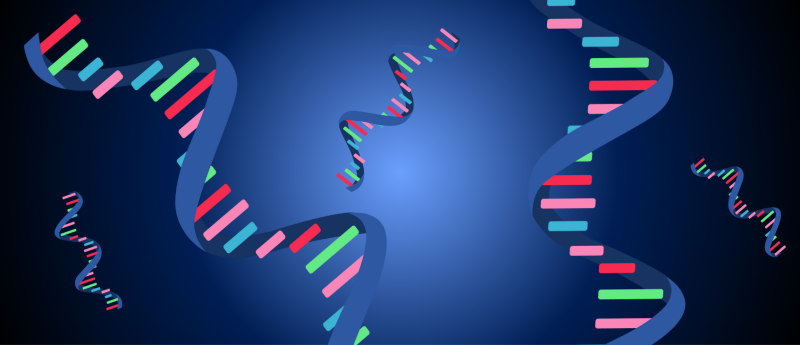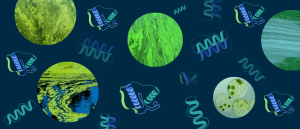Novel RNA sequencing technique uncovers drivers of cell differentiation

Original story from Sylvester Comprehensive Cancer Center.
Rapid precision run-on sequencing (rPRO-seq) may help doctors understand disease states and treatment response in real time.
Researchers at Sylvester Comprehensive Cancer Center (FL, USA) have documented their use of a new RNA sequencing technology to uncover molecular drivers of cellular differentiation that could lead to better regenerative therapies. In addition to being used in the lab, the technique, rapid precision run-on sequencing (rPRO-seq), has the potential to help doctors understand patients’ disease states and response to treatment in real time.
The findings appear in two published articles [1, 2]. “We saw a major bottleneck in the field of nascent RNA profiling,” commented Pradeep Kumar Reddy Cingaram, an assistant scientist at Sylvester and first author on one of the papers [1].
“Existing methods, while powerful, are simply too slow and require large amounts of biological material. Imagine needing tens of millions of cells and several days just to get started – that immediately ruled out crucial research on rare cell types or precious patient biopsies,” he added.
Testing rPRO-seq
In the first study [1], the team used rPRO-seq to study the role of a protein complex called Integrator in regulating gene expression, which was previously untraceable with nascent RNA sequencing.
“INTS11, the catalytic subunit of Integrator complex, was a compelling choice for us because we already knew it was a key player in gene regulation,” explained Cingaram.
Using cellular reprogramming models to induce neuronal differentiation, they found that when INTS11 was removed from neuronal cells, gene activity tied to brain development changed dramatically. Genes that needed to be active in order to prevent neurodevelopmental and psychiatric disorders were deactivated when the scientists removed INTS11.
 Rapid mass spectrometry could detect harmful algae before they pose a threat
Rapid mass spectrometry could detect harmful algae before they pose a threat
Native mass spectrometry that targets the blue component of blue-green algae has been found to be more sensitive to potentially toxic blooms than current techniques.
“rPRO-seq allowed us to pinpoint a critical role for the INTS11 protein as a regulator of genes involved in neurodevelopmental disorders in neuronal cells,” highlighted Ramin Shiekhattar, senior author on both of the studies and co-leader of the Cancer Epigenetics Program at Sylvester.
The technique only required 12 hours and 5000 cells. Existing technologies needed several days and millions of cells. Additionally, the scientists emphasize that rPRO-seq allowed them to understand not just when genes were turned on and off, but how. “That is, rPRO-seq allows mechanistic understanding of gene expression changes,” added Shiekhattar.
“Standard RNA sequencing looks at ‘steady-state’ RNA – the accumulation of what’s been made. It’s like seeing how many cars are on the road. But rPRO-seq reveals ‘nascent’ RNA – what’s being made right now. It’s like watching cars leave the factory. This gives us crucial, real-time insights into active gene transcription,” explained Cingaram.
INTS11 in regenerative medicine
Next, the team used rPRO-seq to study the role that INTS11 plays in stem cells’ ability to differentiate into any kind of cell in the body, a characteristic called pluripotency [2]. They found that the protein began playing a critical role in gene regulation as early as day two of embryonic development.
“This greatly expands our understanding of how pluripotency and differentiation are harmonized at the molecular level,” said Shiekhattar.
Using a lab model, they found that the Integrator complex binds and regulates critical genes for stem-cell identity essential for maintaining pluripotency. Additionally, “the work is paradigm-shifting as it places Integrator complex at the earliest steps in transcriptional cycle, known as ‘initiation,’ compelling a revision of current theories for transcriptional initiation,” explained Shiekhattar.
While both findings regarding the role of INTS11 in early development are major steps in understanding cellular differentiation, the scientists point out that the rPRO-seq could be used for many more research and clinical purposes, such as sampling a tumor to see how it’s responding to therapy.
“Overall, rPRO-seq could emerge as a valuable tool for both research and clinical settings, expanding the scope of transcriptomic analyses and enabling more precise, individualized health care,” concluded Shiekhattar.
This article has been republished from the following materials. Material may have been edited for length and house style. For further information, please contact the cited source. Our press release publishing policy can be accessed here.